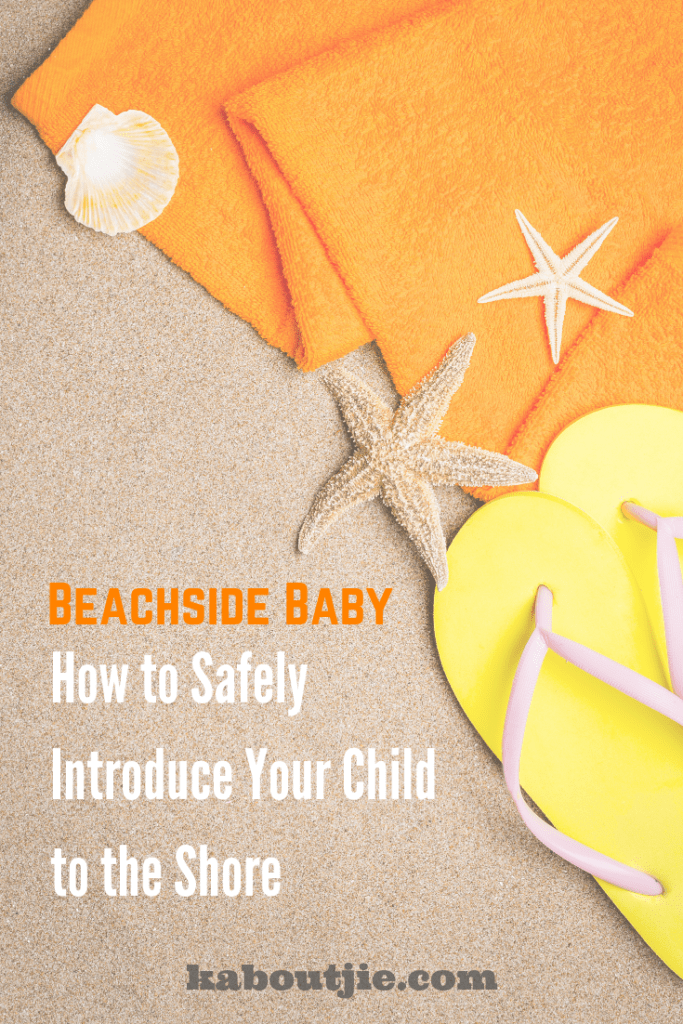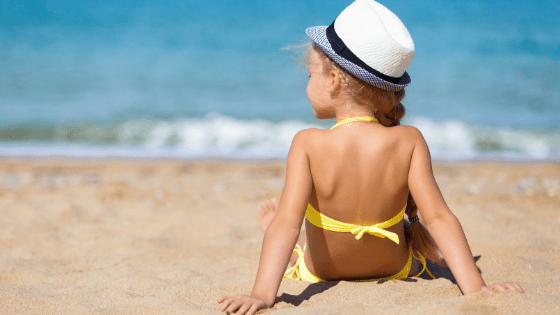Child safety is important. Little children are particularly vulnerable to all sorts of mishaps and accidents and it’s up to their parents to keep them safe from harm. There’s lots you can do in and out of the house to keep your kids safe. Once your child is old enough to crawl you need to babyproof the house and cover power points, sharp corners and lock cupboards with dangerous goods inside them. Once they’re old enough to walk you’ll need to take further precautions, like mounting the TV or keeping the front door locked, so they don’t wander off.
But what if you’re planning a trip down the coast or to your nearest beach? The beach will be a brand new place for your bubba, so there’s a few things you need to do to ensure that their first shoreside experience is safe and positive. Read on to find out more.

Sun Protection, Sun Smart
Unless you’re going to the beach in the middle of winter, you’ll need some sun protection from a baby shop in Melbourne. The first and most important thing is sunscreen. Choose a brand that is specifically for children and is 50 plus. Then, ensure that your child is lathered up with sunscreen on their bare skin. Apply it a good twenty minutes to half an hour before they go for a paddle. A nice, wide-brimmed hat is the next step to protect their delicate face from the harsh Australian sun. Finally, consider using a long-sleeved rasher vest to protect their arms. For the beach itself you can grab a large beach umbrella or a beach tent so your family has some shaded spots to relax in, away from the sun.
Floaties
While you’re shopping for sun protection, grab some flotation devices as well. You have a few options here — you can go for arm rings, flotation rings or floaty vests. The basic idea behind this gear is that it will keep your child buoyant in shallow water but it is by no means a replacement for careful attention or the same as a proper life vest. Which brings us to our next point.
Pick Your Times
During the peak of summer the sun is at its hottest between 11 in the morning and 3 in the afternoon. If possible, consider timing your trip to the beach for either first thing in the morning or after the peak of the day. This way it’s cooler, the sun is less intense and there is less chance of both sunburn or sunstroke.
Know the Signs of Sunstroke
If your child, or you for that matter, shows any of these signs then it’s time to pack up and leave the beach and seek medical attention. Throbbing headaches, dizziness and lightheadedness are all signs of heat stroke, as well as a lack of sweating, red, hot and dry skin and muscle cramps or weakness. Nausea and vomiting, a rapid heartbeat and rapid and shallow breathing are all warning signs too.
Supervision, Always
Young children need to be supervised at the beach at all times, especially if they’re in or near the water. This means active attention, not just keeping a casual eye on them. While lifeguards can keep an eye on the older kids’ deeper in the water, if your infant is playing near the shore you need to be within arms reach of them at all times. This means no phones, no newspapers, no books — no distractions. If you’re at the beach with your spouse set up a roster system. One parent monitors the baby or toddler while the other relaxes. Switch it up after an hour.

Explain the Dangers
If your child is old enough to understand language, start speaking to them about your trip to the beach a few days or a week before you go. As well as getting them excited for their new adventure, it gives you a chance to begin to explain the basics of water safety to them. Tell them that it is fun to play in the water, but they must always listen to mummy and daddy and to not put their head under the water for too long. Don’t scare them, as you want them to enjoy having a splash, but just explain that water can be dangerous, and they must be careful.
Keep up the Fluids
Kids at the beach in summer are usually quite active — whether they’re paddling in the shallows, kicking a ball or playing beach cricket. This means that hydration is as important as ever. Pack a large thermos or similar container filled with cool water and encourage your child to drink from it regularly. You need to be firm here as they’ll likely be having too much fun to want to stop, but make them have a good solid drink every half hour or so.
Pack a First Aid Kit and all Medications
No road trip is complete without a fully equipped first aid kit. Scrapes, bumps and bruises can happen anywhere at the beach, from the carpark to the shore. Check your kit before you leave to make sure that it is stocked up and grab any supplies that you’re missing from the chemist before you head to the beach. Make sure to pack your child’s regular medications as well, especially if you’ll be there all day. Asthma puffers, epipens, Panadol and Nurofen are all good if needed, as well as any other meds they take.
A Sunny Summer
Your child’s safety at the beach is important. Sun protection is a must, and flotation devices are a great idea. Go early in the morning or late in the day to avoid the intense heat. Know the signs of sunstroke, and always supervise children near any water. Explain the dangers of the water to your child if they’re old enough to understand, and keep their fluids up. Finally, have a stocked first aid kit and all your kids’ regular medications on hand.
 Kaboutjie SA Mommy Blogs by Lynne Huysamen
Kaboutjie SA Mommy Blogs by Lynne Huysamen








This is so beautiful 😊
Wonderful advice!!